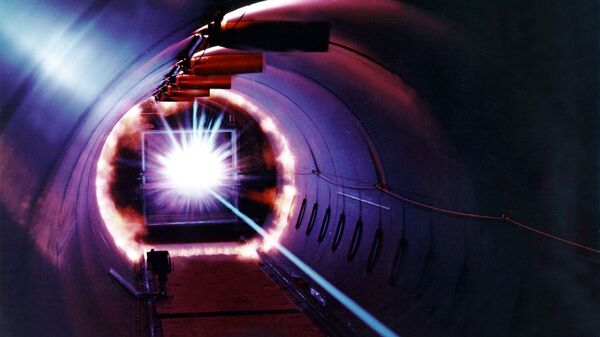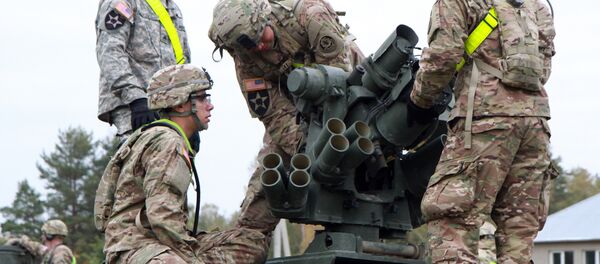The US Army's Space and Missile Defense Command (SMDC) has presented a five-year plan to develop high-energy lasers capable of shooting enemy aircraft out of the sky.
Thus far, the Army's endeavors to build military-grade laser weapons have focused on developing a counter to unmanned aerial vehicles (UAVs). Small drones can carry scouting cameras or bombs and are difficult to shoot down with existing ordnance due to their size and speed — the current method, shooting a Patriot or Hellfire missile at the drone, is both expensive and has a high risk of collateral damage.
But laser technology has shown itself as a promising alternative. During the late February and early March Hard Kill Challenge conducted by SMDC and the Army Forces Strategic Command (AFSC), the Army tested two experimental laser systems. The first was the Boeing-General Dynamics Mobile Expeditionary High-Energy Laser 2 (MEHEL 2), a five-kilowatt laser meant to shoot small drones down, and it met with astonishing success as the operator easily took down over a dozen drones during the test.
The second laser was the High Energy Laser Mobile Test Truck (HELMTT) 10 Kilowatt Laser. Compared to the more portable MEHEL 2, the HELMTT laser comes mounted on a large armored vehicle. Presently, it's an anti-drone weapon, but SMDC is working on a prototype of a 60 Kilowatt version that could shoot down larger targets.
"Both of the laser systems were highly successful," said Lt. Gen. James H. Dickinson, who commands both SMDC and AFSC, to an audience at the US Army's Institute of Land Warfare.
"These advanced laser systems can be integrated into more rugged and mobile platform compatible with the Army's Battle Management Network in order to provide a lethal, low-cost and persistent defensive capability," he added.
The benefits to laser technology are too many to name. While the lasers themselves are expensive to build, actually firing them is stunningly inexpensive — as little as a dollar per shot, essentially nothing. Operators can be trained in their use in a few weeks, they never run out of ammunition and they carry a much lower risk of collateral damage due to their targeted nature.
The development process is going so well, Dickinson added, that the Army will be expanding their commitment to laser weapons considerably next year. "In FY18, we will continue to improve upon these cutting edge systems by testing a 50 KW laser integrated into a similar platform," he said. "A 50 KW laser is a key component in a system known as the high-energy laser tactical vehicle demonstrator."
The ultimate goal is to develop a functional and combat-ready 100 KW laser by 2022. A mammoth laser like that could be used to shoot down "rotary-wing and fixed-wing" targets — in other words, helicopters and planes.
On July 18, the US Navy test fired a laser weapon of their own: the $40 million Laser Weapons System (LaWS) aboard the transporter USS Ponce. LaWS successfully shot a drone out of the sky over the Persian Gulf, and the operating crew crowed about the weapon's effectiveness, precision, inexpensiveness to fire, versatility, and potential.
"It's designed with the intent of being able to counter airborne and surface-based threats," LaWS operator Lt. Cale Hughes told CNN. "And it's been able to prove itself over the last three years as being incredibly effective at that."





